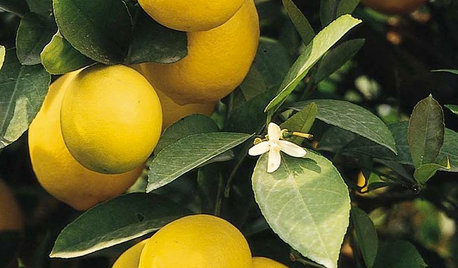virused roses
Poorbutroserich Susan Nashville
10 years ago
Related Stories

WINTER GARDENINGPruning Secrets for Exquisite Roses
Encourage gorgeous blooms year after year with this time-tested advice on how to prune your rosebush in winter for health and shape
Full Story
LIFEHow to Outsmart Backyard Critters
Learn to think like a raccoon, skunk or squirrel to keep your home safe and your garden intact
Full Story
KITCHEN DESIGN9 Creative Looks for Kitchen Cabinets
When plain cabinet finishes just won’t cut it, consider these elegant to inventive approaches
Full Story
GARDENING GUIDESThe Secret Formula for Grouping Plants in a Pot
Designing a gorgeous container garden is easy once you know this simple rule of thumb for composition
Full Story
CALIFORNIA GARDENINGCalifornia Gardener's February Checklist
Celebrate 5 California classics: plants that defy winter with bright flowers, luscious fragrance and, for some, delicious taste
Full Story
MOST POPULAR8 Backyard Ideas to Delight Your Dog
Cue the joyous soundtrack. These pet-friendly landscape and garden ideas will keep your pooch safe, happy and well exercised outdoors
Full Story
EARTH DAYGrow a Beautiful Garden With Ecofriendly Greywater
Reducing home water waste means lower bills and a healthier planet. Here's how to set up a greywater home irrigation system that can help
Full Story
FARM YOUR YARDHello, Honey: Beekeeping Anywhere for Fun, Food and Good Deeds
We need pollinators, and they increasingly need us too. Here, why and how to be a bee friend
Full Story







BaaBaaRaa
Evenie
Related Discussions
roses grown in E Texas and virused vs virus-index
Q
Shovel Pruned Virused Rose: Can I replant?
Q
Identify virused roses
Q
Vintage Garden's VID roses
Q
racin_rose
dublinbay z6 (KS)
plan9fromposhmadison
roseseek
Evenie
seil zone 6b MI
henry_kuska
henry_kuska
Tessiess, SoCal Inland, 9b, 1272' elev
Tessiess, SoCal Inland, 9b, 1272' elev
roseseek
Tessiess, SoCal Inland, 9b, 1272' elev
Tessiess, SoCal Inland, 9b, 1272' elev
henry_kuska
roseseek
jerijen
henry_kuska
roseseek
BaaBaaRaa
dublinbay z6 (KS)
henry_kuska
roseseek
henry_kuska
jerijen
malcolm_manners
Kippy
jerijen
henry_kuska
Tessiess, SoCal Inland, 9b, 1272' elev
henry_kuska
malcolm_manners
henry_kuska
AquaEyes 7a NJ
henry_kuska
jerijen
ken-n.ga.mts
User
porkpal zone 9 Tx
Kippy
henry_kuska
AquaEyes 7a NJ
henry_kuska
AquaEyes 7a NJ
User
henry_kuska
henry_kuska
henry_kuska
henry_kuska